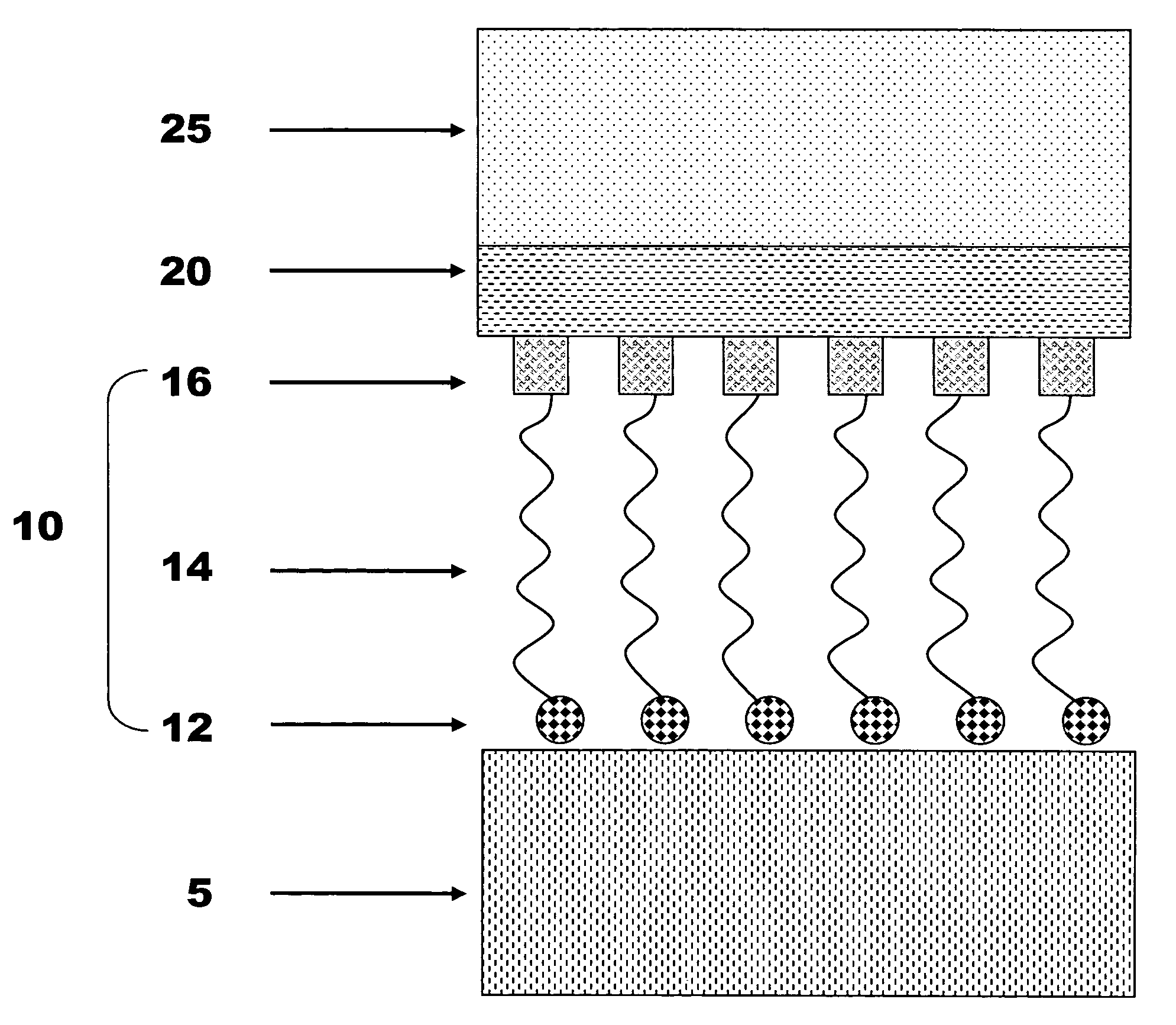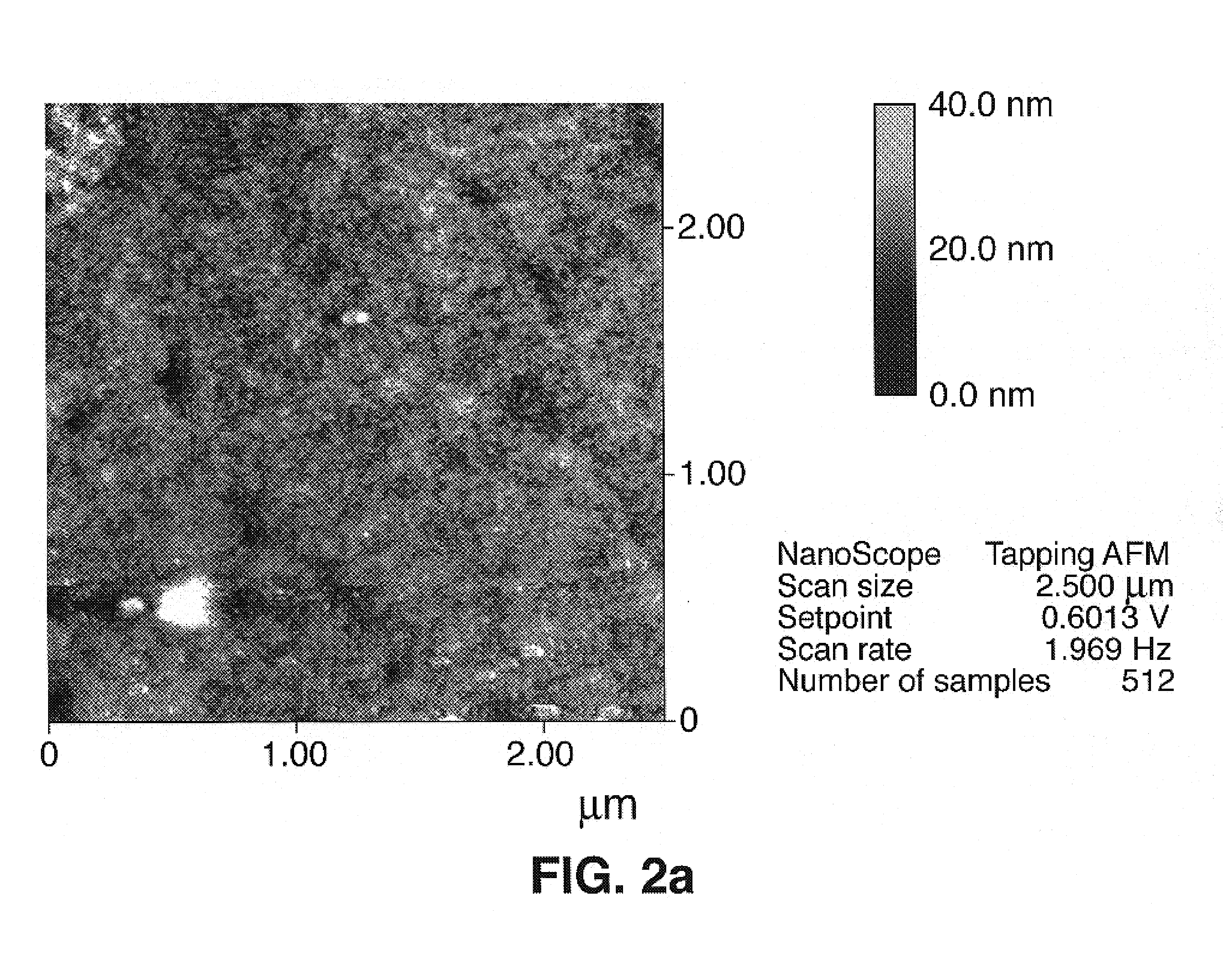Method for fabricating hafnia films
a thin film and fabrication method technology, applied in the direction of crystal growth process, liquid/solution decomposition chemical coating, polycrystalline material growth, etc., can solve the problems of high temperature and vacuum, hafnia deposition, and the fabrication of hafnia film via a cost-effective low-temperature route (i.e. sam-mediated solution deposition) have not yet been reported
- Summary
- Abstract
- Description
- Claims
- Application Information
AI Technical Summary
Benefits of technology
Problems solved by technology
Method used
Image
Examples
Embodiment Construction
[0049]Applicant's invention is a method for the uniform deposition of hafnia precursor film on a solid substrate surface such as silicon, silicon wafers, glasses, polymers, ceramics or any other material that carries functional surface groups (such as —OH), via self-assembled monolayers (SAMs). Hafnium sulfate was used to prepare aqueous solutions, although nitrate or chloride salt or any other salt capable of undergoing particle nucleation and growth when in aqueous solution can also be used. The film deposition method of Applicant's invention comprises synthesis of SAM precursor molecules, SAM formation on solvent-cleaned wafers, and submerging SAM-coated silicon wafer in a solution in which process parameters such as inorganic salt concentration, acidity, temperature and incubation time are controlled. The process parameters affect the film thickness, surface roughness, and the nanocluster size on the film. As with zirconia systems, bulk (visible) precipitation, a prerequisite fo...
PUM
| Property | Measurement | Unit |
|---|---|---|
| temperature | aaaaa | aaaaa |
| temperatures | aaaaa | aaaaa |
| thickness | aaaaa | aaaaa |
Abstract
Description
Claims
Application Information
 Login to View More
Login to View More - R&D
- Intellectual Property
- Life Sciences
- Materials
- Tech Scout
- Unparalleled Data Quality
- Higher Quality Content
- 60% Fewer Hallucinations
Browse by: Latest US Patents, China's latest patents, Technical Efficacy Thesaurus, Application Domain, Technology Topic, Popular Technical Reports.
© 2025 PatSnap. All rights reserved.Legal|Privacy policy|Modern Slavery Act Transparency Statement|Sitemap|About US| Contact US: help@patsnap.com



